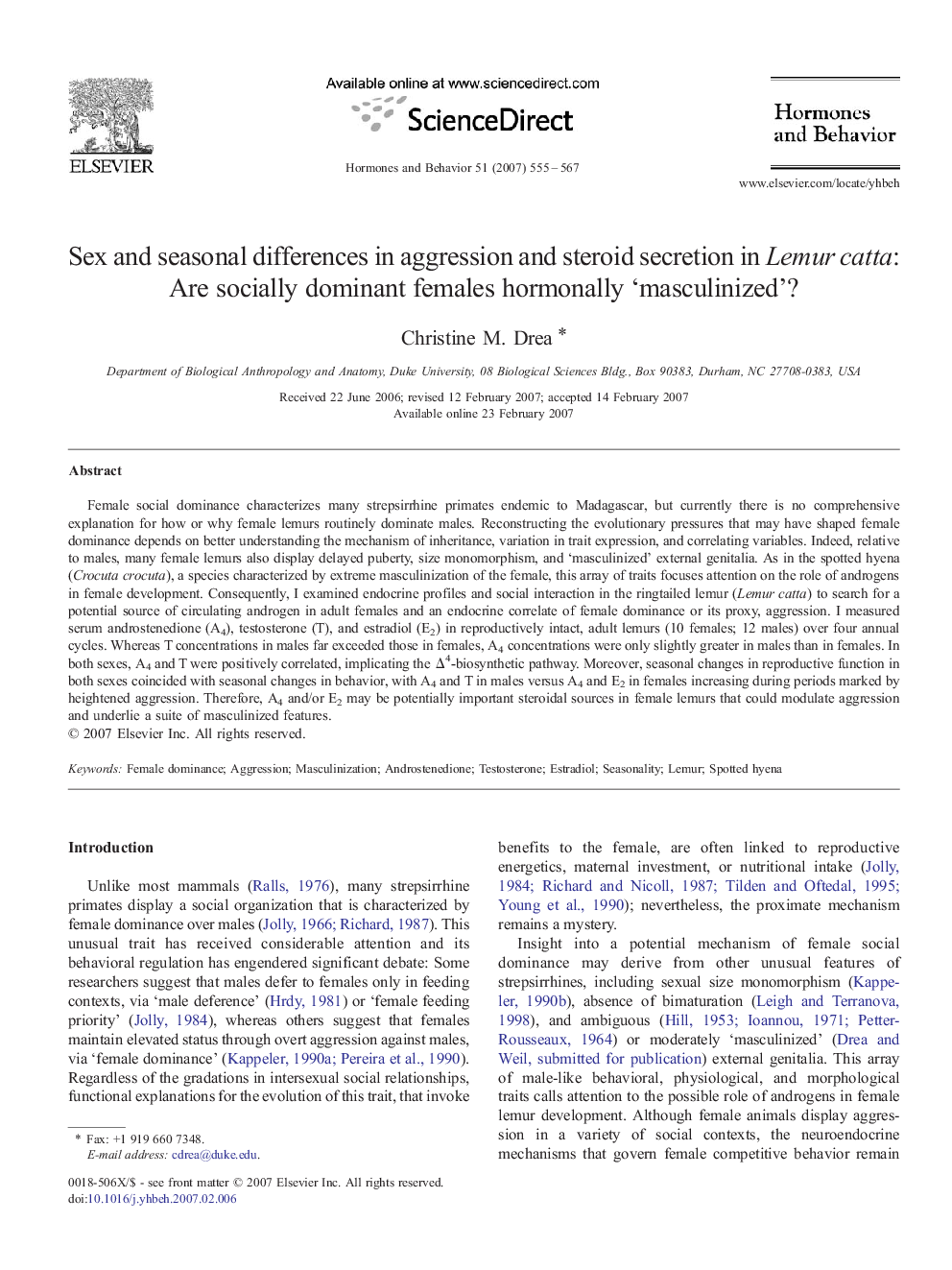| کد مقاله | کد نشریه | سال انتشار | مقاله انگلیسی | نسخه تمام متن |
|---|---|---|---|---|
| 323824 | 540796 | 2007 | 13 صفحه PDF | دانلود رایگان |

Female social dominance characterizes many strepsirrhine primates endemic to Madagascar, but currently there is no comprehensive explanation for how or why female lemurs routinely dominate males. Reconstructing the evolutionary pressures that may have shaped female dominance depends on better understanding the mechanism of inheritance, variation in trait expression, and correlating variables. Indeed, relative to males, many female lemurs also display delayed puberty, size monomorphism, and ‘masculinized’ external genitalia. As in the spotted hyena (Crocuta crocuta), a species characterized by extreme masculinization of the female, this array of traits focuses attention on the role of androgens in female development. Consequently, I examined endocrine profiles and social interaction in the ringtailed lemur (Lemur catta) to search for a potential source of circulating androgen in adult females and an endocrine correlate of female dominance or its proxy, aggression. I measured serum androstenedione (A4), testosterone (T), and estradiol (E2) in reproductively intact, adult lemurs (10 females; 12 males) over four annual cycles. Whereas T concentrations in males far exceeded those in females, A4 concentrations were only slightly greater in males than in females. In both sexes, A4 and T were positively correlated, implicating the Δ4-biosynthetic pathway. Moreover, seasonal changes in reproductive function in both sexes coincided with seasonal changes in behavior, with A4 and T in males versus A4 and E2 in females increasing during periods marked by heightened aggression. Therefore, A4 and/or E2 may be potentially important steroidal sources in female lemurs that could modulate aggression and underlie a suite of masculinized features.
Journal: Hormones and Behavior - Volume 51, Issue 4, April 2007, Pages 555–567